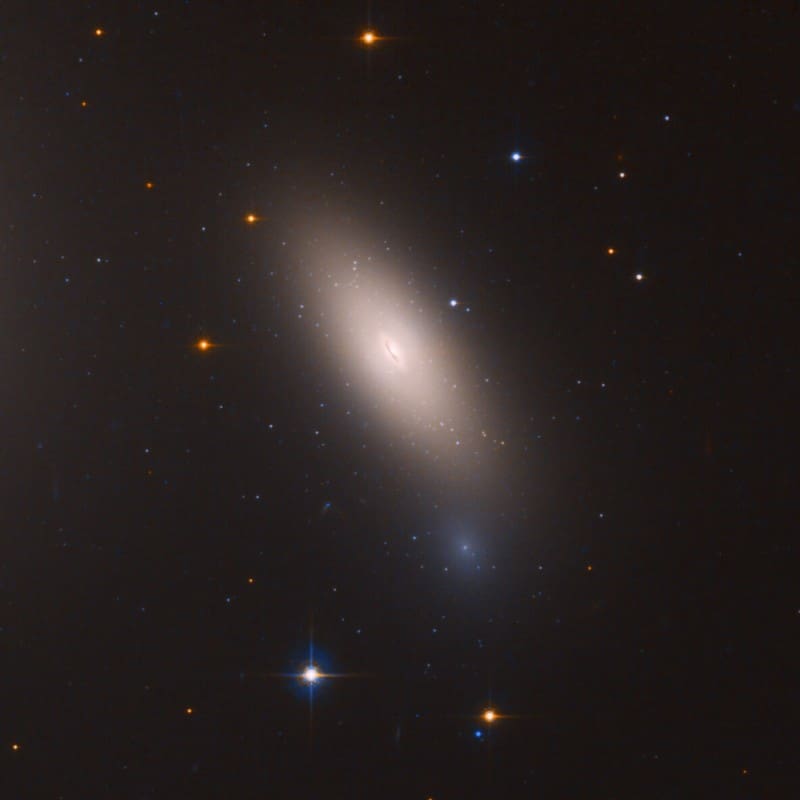The Cosmos with NGC 1277
NGC 1277 is located near the center of the cluster Perseus, consisting of more than 1000 galaxies and located 240 million light years from us. It travels so fast through the cluster at a speed of 3 million kilometers per hour that it can not merge with other galaxies, absorb their stars or draw gas for star formation. In addition, in the center of the cluster, the intergalactic gas is so hot that it can not condense and form stars. The team was looking for the “slow development” galaxy in the Sloan Digital Sky Survey and found 50 candidates, among which NGC 1277 was identified as unique because it contains a central black hole that is much more massive than a galaxy of this size can have. This was confirmed by the scenario that the supermassive black hole and dense structure of the galaxy grew simultaneously, but the stellar population ceased to expand due to the lack of an external inflow of material. The team has 10 other candidate galaxies that demonstrate a different degree of “slow development”. NASA’s James Webb space telescope, scheduled to launch for 2019, will allow astronomers to measure the movement of globular clusters in NGC 1277, which for the first time will provide an opportunity to assess how much dark matter is contained in the primary galaxy.
